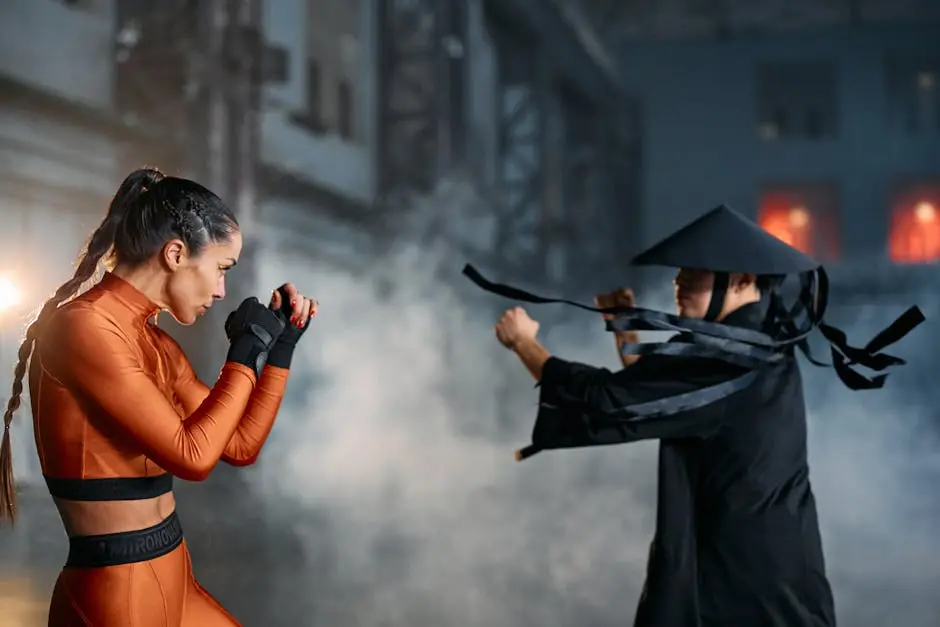Kung Fu films have long captivated audiences around the world, blending breathtaking choreography with compelling storytelling. However, amidst the iconic titles and well-known legends, there lies a treasure trove of lesser-known films that deserve recognition. In this blog, we’ll take a closer look at some of these hidden gems, exploring their unique contributions to the genre and what makes them stand out.
The Evolution of Kung Fu Cinema
Kung Fu cinema has a rich history, originating in the 1920s and evolving through various styles and influences. Understanding this timeline helps us appreciate the context in which lesser-known films emerged.
Initially, these films began with a focus on traditional martial arts, showcasing the skills of performers in elaborate dance-like battles. As the genre matured, filmmakers experimented with narrative styles and introduced more complex characters, making the stories behind the fights as compelling as the action itself.
In the 1970s, a significant shift occurred with the arrival of new stars and directors who combined the essence of kung fu with innovative storytelling. This decade saw the rise of legendary figures like Bruce Lee, whose influence is undeniable, yet overshadowed many talented filmmakers whose contributions went unnoticed.
As we journey through the evolution of Kung Fu cinema, it becomes clear that the genre is a tapestry woven from various influences—historical narratives, folklore, and societal commentary. This backdrop enriches our exploration of the underrated films that emerged during these transformative years.
The Role of Independent Filmmakers
Many of the lost gems in Kung Fu film history were created by independent filmmakers who dared to push boundaries. Independent studios often faced financial constraints, but they displayed a passionate creativity that resulted in compelling narratives and unique styles. These filmmakers weren’t just trying to replicate the success of the big names; they were telling their own stories.
One notable figure is Yuen Woo-ping, a choreographer and director whose work extended beyond the mainstream. He blended traditional techniques with modern narratives, appealing to both martial arts enthusiasts and general audiences alike. His influence on the genre is profound, inspiring a new wave of filmmakers to explore their own voices in Kung Fu.
These independent creators often tackled themes that were overlooked by larger studios—issues like poverty, identity, and resistance against oppression. By diving into these topics, they added depth to their action sequences, creating a more profound viewing experience that resonates with audiences even today.
Ultimately, the stories crafted by these filmmakers remind us of the diversity within Kung Fu film history. Each creator brought their unique perspective, ensuring that the genre was not only a spectacle of fights but also a canvas for cultural expression and storytelling.
Exploring Hidden Treasures
From obscure titles to international releases, this section will highlight specific films that may have slipped under the radar but have much to offer in terms of action, narrative, and cultural significance. One such hidden gem is “The 36th Chamber of Shaolin”, a movie that left an indelible mark on martial arts cinema. It beautifully encapsulates the journey of self-discovery through rigorous training and the quest for mastery.
Additionally, lesser-known films like “The Last Dragon” provide a fascinating blend of kung fu films and pop culture. This vibrant movie not only has impressive fight choreography but also explores themes of self-empowerment and cultural identity that resonate across generations.
Exploring titles like “Dance of the Drunken Mantis” showcases how creative choreography can serve storylines that revolve around overcoming obstacles in life. The film uniquely captures not just the physical prowess of its performers, but the heart and spirit that fuels martial arts practice.
Through these highlighted films, we uncover the nuances of kung fu film history, appreciating how each article contributes to the larger narrative of the genre. By diving deeper into these hidden treasures, we can learn more about the cultural contexts that shaped these stories and celebrate their impact on cinema.
The Cultural Impact of Lesser-Known Films
These hidden gems not only provide entertainment but also reflect cultural shifts and societal themes of their time. Films like “Heroes of the East” showcase the blend of East and West, symbolizing a period of globalization where cultures intersected. These narratives often inspired viewers to rethink preconceived notions and embrace diversity.
In addition, many lesser-known titles tackle issues of social justice and personal struggle, themes that resonate deeply today. The film “Tiger Claws” presents narratives that challenge societal norms, showcasing characters who break free from the shackles of tradition to forge their destinies. Such films encourage dialogue about the changing landscape of social issues and personal identity.
By examining the cultural impact of these films, we unearth the stories that might not have reached mainstream audiences but hold great significance. They serve as a mirror reflecting the zeitgeist of their time, making them essential to understanding the evolution of not just kung fu cinema but also societal narratives.
Why Rediscovering These Films Matters
Rediscovering lost gems encourages a broader appreciation for the genre and its diversity. It challenges audiences to engage with the full spectrum of Kung Fu cinema, beyond the mainstream hits. This journey into the archives not only enhances our viewing experience but nurtures a deeper connection with the art form.
Moreover, revisiting these films allows us to witness the artistry and creativity that often goes unnoticed. The intricate choreography, compelling narratives, and cultural nuances present in these lesser-known works provide insights into the evolution of martial arts on screen. It’s about acknowledging the hard work of those who dedicated their lives to the craft, ensuring their stories are not lost in time.
In essence, embracing these films is about celebrating the full richness of Kung Fu film history. As a fan of the genre, stepping into the world of hidden gems can be a rewarding experience. It not only expands our understanding but also reignites our passion for the captivating stories waiting to be uncovered.
Embracing the Legacy of Underrated Kung Fu Films
Rediscovering these lost gems in Kung Fu film history not only enriches our understanding of the genre but also offers a chance to appreciate the artistry and creativity that flourished in less mainstream titles. So, the next time you think of Kung Fu films, take a moment to venture beyond the familiar and explore the captivating stories waiting to be uncovered.


